Growing guide
How to grow hardy fuchsias
With their profusion of dainty two-tone pendent flowers that last well into autumn, hardy fuchsias bring a tropical touch to borders and containers in warm sheltered spots, in sun or partial shade. Compact and bushy, they can even be grown as informal hedges.
Quick facts
- Easy to grow
- Flowers from mid-summer through to the first frosts of autumn
- Plant hardy fuchsias in early summer
- Flower their best in full sun, but are also happy in partial shade
- Trim off dead shoots in spring
- Mulch after pruning to help retain moisture and improve the soil
- Hardwood cuttings are a successful propagation method
All you need to know
Choosing a hardy fuchsia
Hardy fuchsias are reliable and versatile shrubs that grow well in borders and containers, and tall types will even make attractive hedges. You just need to check the label to see if they hardy before you buy to ensure you have a hardy fuchsia and not a tender one – they all look very similar. Once that’s done, most gardeners choose fuchsias for their looks:
- Flowers come in a wide range of colours, from white, pale pinkish-white, and all the shades of red, pink and violet-purples. It’s personal choice, so go for what you like
- Flower shape is also a key attraction. Choose between full-on doubles, slender single bells and most things in between
- Leaves are mainly mid-green, but there are
Variegated means having leaves or other plant parts with streaks, blotches or patches of different colours. Typically, these would be a combination of two colours, such as green and gold or green and white.
- Although typically not an overly large shrub, there are a few that will make a large shrub or hedge. Research the height and spread to get the perfect fit
- Do you want a fuchsia hedge? We've put together a list of fuchsias for hedges you can use in the UK cities and milder locations. In colder locations may need to select hardier plants, such as Fuchsia ‘Riccartonii’, for hedging to maintain a permanent feature (otherwise they will die to the ground in winter and entirely regrow in the following spring/summer)
Where and how to buy
Hardy fuchsias can usually be found in garden centres and nurseries up and down the country. In early spring, you’ll find them sold cheaply as
Seedlings or young plants grown singly in small modules, with the advantage that they can be transplanted with minimal root disturbance. Bedding plants and young veg plants are often sold as plug plants of various sizes, with smaller ones requiring more aftercare. They usually need to be potted up and grown on indoors until large enough to plant outside.
Frost-free environments, such as a cool greenhouse or conservatory, have a nighttime minimum of 4°C (39°F). This is ideal for plants tolerant of low temperatures, but will not survive being frozen, such as tender plants being overwintered including pelargoniums; frost-tender rooted cuttings such as penstemon; and bedding plants in spring.
A wider selection of varieties can be obtained from specialist growers or order from online.
When to plant
For best results plant hardy fuchsias in early summer. You can also plant later in summer, but you’ll need to water more in dry weather to help the fuchsias establish.
Although they are hardy, planting from autumn to spring makes them vulnerable to cold damage and they may not survive their first season so easily.
Where to plant
- A sunny or dappled-shady spot is best for a healthy plant and a good show of flowers
- They will tolerate most soil types, but will not fare well in the extremes where the ground is wet or dry
- Hedges of hardy fuchsia only really grow well in mild locations – in colder regions they are killed to the ground in winter! This is one to try in the shelter of the city; southern England, coastal Wales, Cumbria and on the west coast of Scotland
How to plant
In the border
Plant the shrub base 5cm (2in) deeper than the soil level, covering the lower part of the stems. This gives the crown extra protection from harsh winters, and helps the plant to survive and regrow after winter cold snaps.
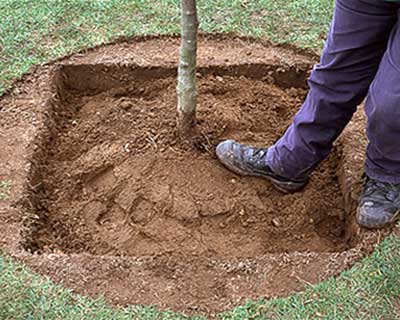
RHS guide to tree and shrub planting
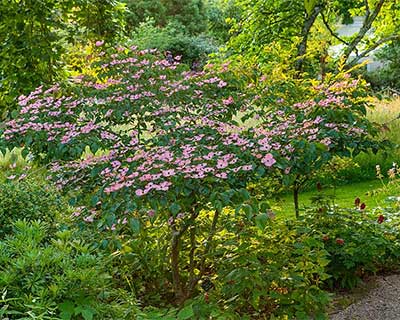
How to plant a shrub
In a container
Smaller hardy Fuchsia are ideal little shrubs for growing in containers – great for adding long-lasting colour to a patio or paved area.
- For healthy, container-grown plants, choose a loam-based compost such as John Innes No. 2 or a peat free multi-purpose compost
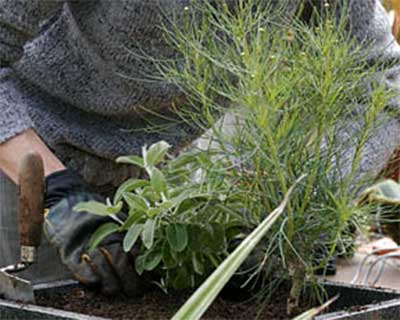
RHS guide to maintenance of container plants
Watering
- After planting, water regularly in the coming spring and summer to aid establishment
- Once established they should only need the occasional soak during hot summers
Feeding
In borders
- If growth is poor, feed once a year in spring with a general-purpose fertiliser such as Growmore or Blood, Fish and Bone
- Mulch annually with organic matter, such as garden compost or well-rotted manure, to help improve the soil, reduce water stress and protect the crown
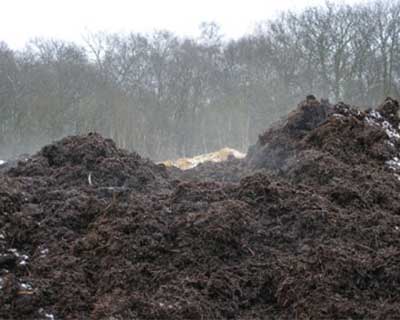
RHS guide to organic matter
In containers
- Apply a liquid fertiliser, such as a tomato or seaweed feed, from mid-May to early September according to the instructions on the packet
Deadheading
The spent flowers often fall off of their own accord. Some will turn into deep purple berries.
Did you know?
The fruit of all fuchsia species and cultivars are edible, but vary in taste and quality, from the tasteless to an unpleasant aftertaste! They are best used for making jam, where the sugar can help enhance the flavour.
Pruning shrubs
There will always be a bit of dieback on a hardy fuchsias over winter, which will need an early spring trim to remove and tidy.
- Remove the dead growth back to live shoots or healthy buds lower down the stems
- In colder gardens, or with a less hardy fuchsia (there is variation in even in 'hardy fuchsias'), all of last year's growth will need cutting down to ground, to make way for the new growth. This is because the cold will kill all stems to ground level – but they will regrow
- Take care not to damage the new shoots at the base as you trim
Pruning fuchsia hedges
Prune back the side branches to healthy shoots or buds in early spring, just as the new growth begins. The aim is to keep the sides neat so that it does look hedge-like, but there will always be some arching, wayward stems as these bear the star attraction: the flowers.
Renovating all fuchsia
Prune plants with congested stems down to the ground in early spring; for them to sprout again shortly after. With hedges, prune down alternate shrubs, to help maintain some form of boundary; then prune the remaining shrubs in the following year.
With minimum effort and great results, fuchsia are excellent plants for trying your hand at propagation for the first time.
Taking hard wood cuttings is the easiest method:
- In late autumn, cut pencil-length woody stems. The stem should be covered with brown woody bark to protect it from rotting over winter, so avoid green stems
- Make a horizontal cut at the base just below a pair of leaves, then trim the top with a sloping cut so water can run off and you can tell which is the top
- Fill a 15cm (6in) pot with peat-free cutting compost and firm lightly in place. Push in the cuttings, spacing 3-6 evenly around the pot. The cuttings should be half in and half out of the compost
- Place them in a cool, frost free location over winter, such as a greenhouse, keeping the compost just slightly damp to the touch
- New shoots should appear from the cutting in spring and these can be potted into individual pots in late spring
- Planted out in early summer, they should flower a little the first season
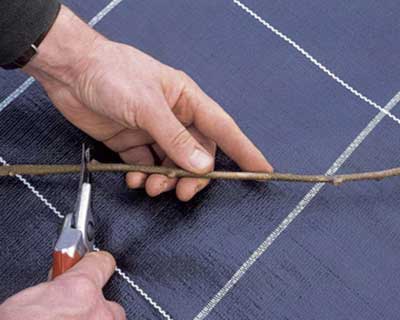
RHS guide to taking hardwood cuttings
Softwood and semi-ripe cutting are just as easy and a great way of producing plants for friends and family.
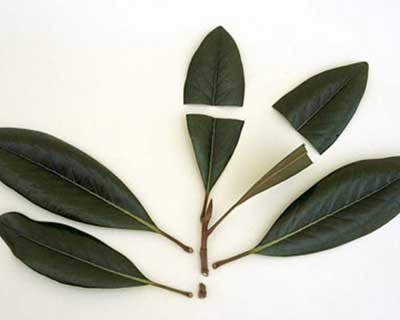
RHS guide to semi-ripe cuttings
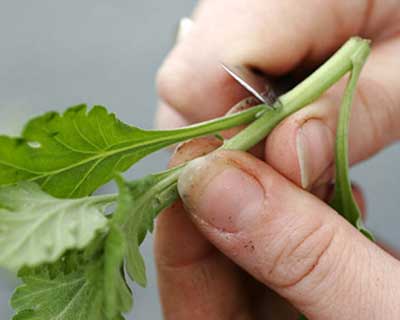
RHS guide to softwood cuttings
Hardy fuchsias are relatively easy to grow, but they can suffer from problems from time to time. These are usually easy to control, such as glasshouse whitefly and vine weevil grubs (which munch away at the roots), but there are trickier problems. Fuchsia gall mite is a new pest to be on the lookout for; while fuchsia rust and red spider mite are difficult to control.
Other pests and diseases to watch out for include aphids, capsid bugs, grey mould, mealybug and fuchsia flea beetle.
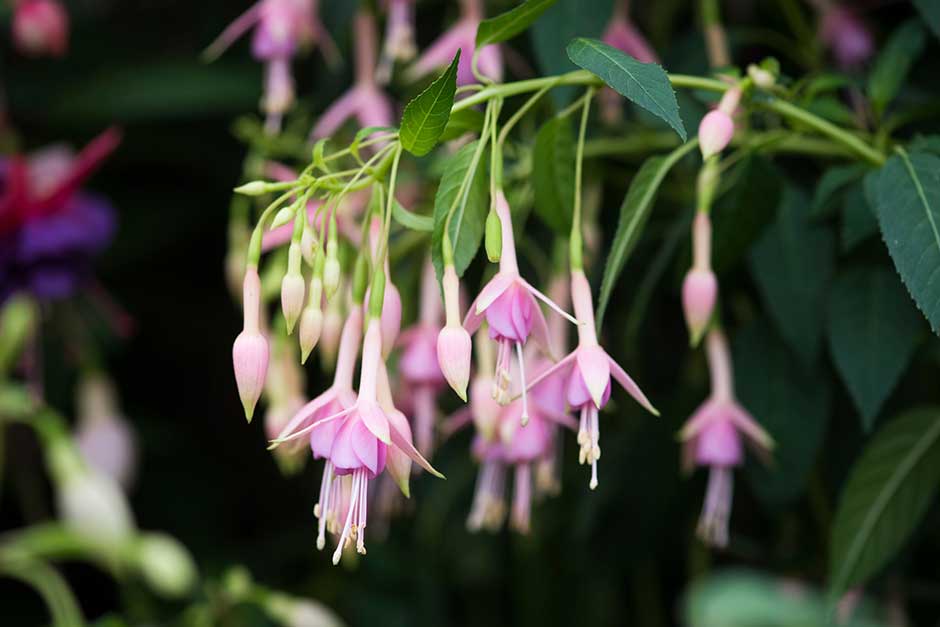
Discover hardy fuchsias
Everything you need to know about choosing the right hardy fuchsia for you.
Get involved
The Royal Horticultural Society is the UK’s leading gardening charity. We aim to enrich everyone’s life through plants, and make the UK a greener and more beautiful place.